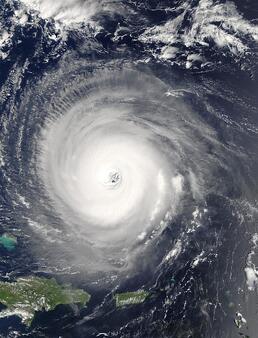- 781-659-2262
 In the aftermath of Dorian, the question remains: what makes a storm a hurricane?
In the aftermath of Dorian, the question remains: what makes a storm a hurricane?
The answer to this question is a significant indicator as to how claims are handled by insurance carriers.
So, let us determine what constitutes a hurricane. Here are some of the conditions that must be met:
Once these conditions are met, a hurricane must have sustained winds of 74 miles per hour or more. The eye of the storm is usually 20 to 30 miles wide and the storm itself may extend up to 400 miles across. The inherent dangers of this type of storm are torrential rains, high winds and tidal surges (super high tides). A hurricane can last for two weeks or more over open water and run a path the length of the Eastern seaboard, from the Caribbean to Nova Scotia.
What caused of Hurricane Dorian to stall over the Bahamas?
When a hurricane moves, the time spent in any particular area is limited. But when it stalls, as Dorian did over Great Abaco for over 36 hours, the devastation continues. The damge Hurricane Harvey caused in Houston was not so much the wind, but the 52" of rain that fell in 48 hours after Harvey's landfall. Hurricanes break apart, or move, when upper level air, the air above the hurricane's most violent force, prevents storm air from rising. Strong air movement above the hurricane creates shear, disrupting the pattern of spinning storm. We like upper atmospheric shear on a hurricane. Similarly, continental high pressure from land (westerly) also pushes hurricanes out to sea limiting damage to homes and businesses. We also like high pressure from the west, southwest or northwest.
On average, 100 tropical storms develop each year between May and November over the Atlantic Ocean. Only six eventually develop into hurricanes and of these six, two are likely to strike the coast of the United States. The Atlantic Hurricane Season begins on June 1 and ends on November 30 of each year, with the most active time being from mid-August through mid-October. The winter hurricane threat is virtually non-existent.
For homeowners living near the coast, having wind or named storm deductibles is common. For more about these - and which is the better among evils - visit our Named Storm vs. Windstorm deductibles page
If you have any other insurance questions, please contact us here at Gordon Atlantic Insurance. We'll help you understand any confusing definitions or tricky aspects of insurance. We make insurance make sense.

We are local insurance experts serving the South Shore for over 70 years.
Click below to get a free quote for your personal or business insurance.